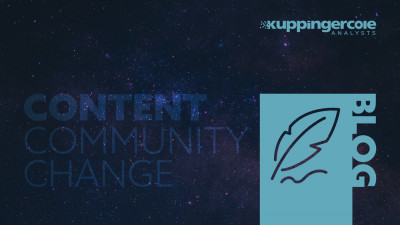Mike Kiser, Senior Identity Strategist at SailPoint and passionate storyteller, is to deliver a presentation entitled Identity Is the New Blue on Monday, September 13 starting at 6:00 pm. at EIC 2021.
To give you sneak preview of what to expect, we asked Mike some questions about his planned presentation.
Why use the history of a color as an analogy for identity?
Great question. I think as I tend to think about identity and other technology and innovation, what fascinates me most is not even how much the technology works, but how it impacts society, how it impacts culture and the semantic value that that technology has. I was looking at museum artifacts because I'm actually on vacation, as you can see. And I started to notice that there was a lack of blue everywhere I look. And so reading more about the trajectory of blue, it really was an easy analogy there to think about how blue has impacted society over the years. And the growth in its semantic use by the culture and by society at large, and by taking lessons from Blue's narrative path, we can see kind of where identity is and where it may be going and how we want, or don't want it to wind up like the color blue as well.
How does the rise of the color blue, specifically, parallel identity?
Well, blue, as I said was particularly fascinating because in the old days, old, old, really old days, it wasn't really used for technological reasons and for cultural impact reasons as well. And so over time, innovation hit, wave after wave of technological innovation. And along with that, the culture started to appropriate blue. It went from kind of non-existence – not even used to describe the sea like you see behind me. Terms like green or even brown or yellow, believe it or not, were used to paint the sea or to talk about the sea. And then this changed 13 hundreds or so when some innovation hit and it became massively popular among a niche group of people – the wealthy, the affluent – and so what that already showed was that the early adopters had an advantage and the early adopters have had an advantage in identity, as well.
As blue progressed, it became the color of normalcy, kind of a normal color. There weren't a lot of outliers. It was still too new to have a lot of cultural weight. And so it was kind of an open Greenfield for people to inject it with their own meaning. It was a safe color. And so it became from the rich, the affluent and powerful, it transitioned into something more common and more accepted by society because it didn't have any negative earlier connotation. And then finally blue exploded in the last century or two into one of the West's most popular color of all colors of all time.
I see identity kind of going through a similar progression, maybe cyclical progression, where it doesn't quite exist in a culture or a subculture, and then innovation and culture work together to foster adoption and to drive new use cases to where ideally in the future, I think identity. And it would benefit everyone in terms of being ubiquitous and not just ubiquitous, but also popular. And so I'm wanting to propose in my talk at the European Identity and Cloud Conference this year, a parallel between the two and then people can come find me and we can argue about it later and discuss it regardless of whether or not you agree with me. It's a great framework for discussing the technology and the cultural impact of something like identity.
What is driving the progression of identity today: innovation or cultural significance?
If you had asked me 5, 10 years ago, I would have said innovation. In part because I was younger, in part because the world was different. I think now it's almost impossible to split apart those two notions – or one drives the other, drives the other. We've seen in the past year how quickly the world can change. You look at the impact of COVID for instance, and COVID mandates, and identity being used to validate who's vaccinated, who's not. What your health status is. These things can turn on a dime. And so I think it's kind of a false question in a way to say, is it one or the other? I think it's an unholy weaving of both together – and one takes the lead and then the other takes the lead. But by knowing that they're equally powerful or can be equally powerful then we can seek to harness that and try and steer the path of identity towards a beneficial, good direction, rather than one that might be more malicious.
What obstacles stand in the way of identity becoming as popular as blue?
Great question. I think one of the primary obstacles standing in the way of identity continuing its ascendancy and it's move towards popularity is quite frankly, ease of use. The people we're talking about here are not identity professionals, they’re not practitioners, they're not even technologists. Think of someone who you would not think of interacting with identity, and that's the target audience that I'm thinking about or contemplating in terms of identity being popular. For that to work, it's not going to be technology as such that is going to move them to adopt that. I think what it's going to be is something that's natural, part of their daily process, where they don't think about it. And so I think we haven't achieved that yet. And that's one of the main barriers, as opposed to, say, the next wave of innovation or technology. If it's not as easy to use – as a friend of mine says – as a spoon, then we've kind of lost the battle there already.










































